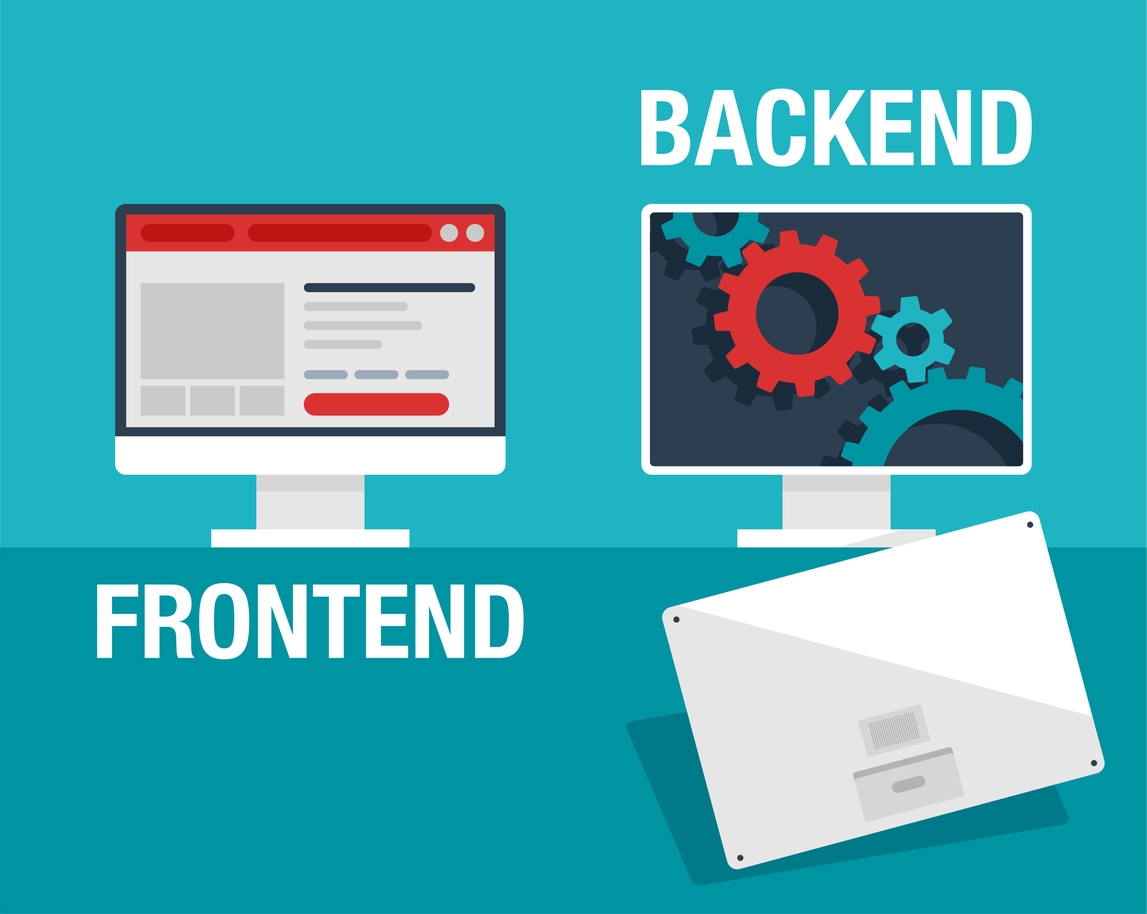No doubt, web development is a vast field with various aspects to it. We’re talking about front-end development, back-end development, server-side programming, client-side programming, etc. Two elements that stand out in any web development project are the front end and the backend. Front-end developers focus on the user interface of websites while backend developers create the code behind them. In other words, the front-end developer works on the visual side of things while the backend developer focuses more on the technical side.
But that’s just the tip of the iceberg, as there are many differences between these two sides of web development. Let’s take a look at what they’re all about!
What Is Front-End Web Development?
The term “front-end” refers to the part of your website that users see first when visiting your site. It includes everything from the layout of pages to the colors used in menus and buttons. The front end also comprises any graphics you use, such as logos or icons.
The front end is where most people will spend their time browsing your site. So if you want visitors to stick around for longer than a few seconds, you must ensure your front end ticks every box.
In addition to aesthetics, the front end also has to be functional. For example, if you have an online store, you’ll probably want to make sure customers can easily navigate your products. You might even want to add filters so shoppers can find what they’re looking for hassle-free.
What Is Back-End Development?
Back-end development involves coding the parts of your website that don’t exhibit visuals. This means writing the code that runs on the server, which processes client requests (i.e., browsers).
For example, a back-end developer would need to write some PHP code that facilitates the display of blog posts on a site. If it’s a forum, the developer will write some HTML/CSS code that displays the forums on your site. And if it’s an eCommerce website, the developer would write code that allows customers to buy items from your site.
As you can imagine, this type of work requires extensive knowledge about how servers and networks operate. But because it doesn’t include anything to do with design, some may deem it uninteresting. Even so, it’s worth noting that without the back-end, none of the front-end stuff would happen.
What Are the Differences Between Front-End and Back-End Development?
There are many differences between front-end and back-end development. Here are the main ones:
1. Responsibilities
Front-end developers typically handle the creation of the user interface (UI) of a website. They usually work closely with designers and graphic artists to develop the look and feel of a site. On the flip side, back-end developers are responsible for creating the code responsible for making the UI possible. These guys often work alone, although they occasionally collaborate with others.
2. Skillsets
Because front-end and back-end are both essential aspects of web development, each requires different skill sets. Here’s a quick breakdown of the skills needed for each area:
- Front-End Developer: A front-end developer should know how to build responsive layouts using CSS3 and HTML5. They should also understand how to create custom elements like forms and navigation bars. In addition, they need to know how to integrate JavaScript into websites.
- Back-End Developer: A back-end developer must be able to program in languages like PHP, Ruby, Java, Python, C++, etc. They should be familiar with database management systems like MySQL, PostgreSQL, SQLite, MongoDB, and more.
3. Timeframes
The time frame required to complete front-end development is much shorter than that of back-end development. The reason is simple: front-end development only involves visual elements, whereas back-end development includes all types of programming.

Cropped shot of computer programmers working on new code
4. Paying Off
Although front-end and back-end development have similar payoffs, one pays off faster than the other. That’s because front-end development is easier to learn and less time-consuming.
However, once you master front-end development, you will find yourself working on projects that require back-end development. So while it might not seem like there’s any money in front-end development, it’s an excellent way to get started in the field.
5. Career Paths
While front-end development has a shallow career entry path, back-end development requires extensive programming knowledge and skills. With front-end development, you only need to master a specific coding language and some basic skills to start your career.
On the flip side, you must have the ability to master multiple languages and possess in-depth skills before becoming a successful back-end developer.
6. Job Titles
Common front-end development jobs include:
- Front-End Developer
- Front-End Web Designer
- Full Stack Developer
- UI Developer
- Front-End SEO Expert
- CSS/HTML Developer
A back-end developer may be qualified for the following jobs:
- Back-End Developer
- iOS Developer
- Software Engineer
- DevOps Engineer
- Full Stack Developer
- Java Developer
Should You Learn Front-End or Back-End Development – Or Both?
If you’ve always wanted to learn web development but are torn between frontend and backed, considering your specific needs and ambition may help. For instance, learning both front-end and back-end development would be ideal if you want to become a full-stack developer.
On the flip side, if you find the idea of working with visual designs and creating a breathtaking user experience, you could choose to specialize in front-end development. And if you fancy figuring out algorithms, working with data, and building robust systems, you could opt for back-end development.
Nevertheless, Woz U is here to make your dream of becoming an on-demand frontend or backend developer come true. We offer some of the most comprehensive training programs available online today. Our courses cover everything from HTML & CSS to JavaScript, Angular, React, Node, Python, Java, Ruby, PHP, SQL, MongoDB, NoSQL, Git, Agile, UX Design, UI Design, DevOps, etc.
And the best part? Our ten courses span only 33 weeks, ensuring you’re always on schedule to achieve your goals.
So, what are you waiting for? Start your journey towards becoming a professional web developer by enrolling at Woz Partner Institutions today!





